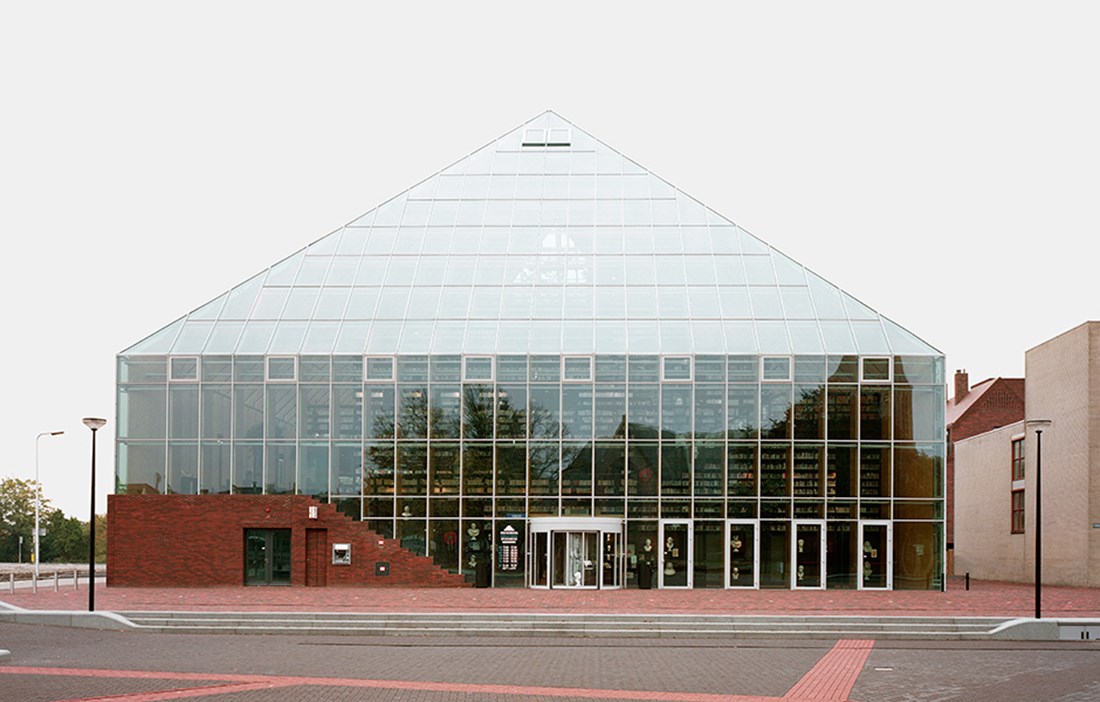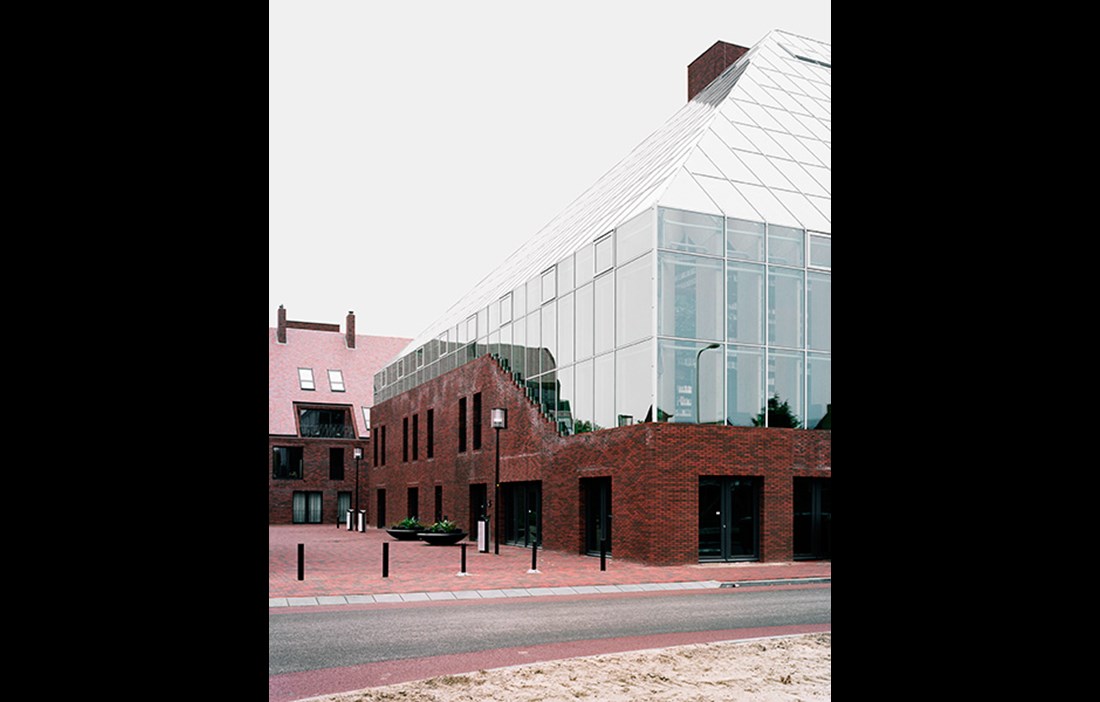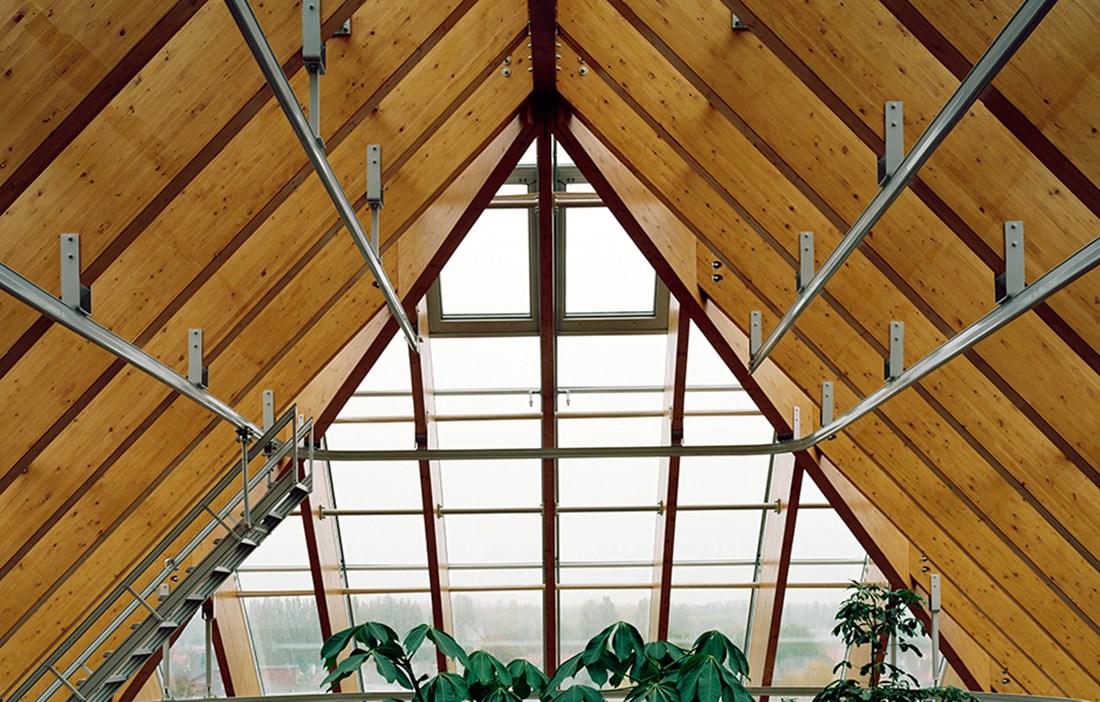WINY MAAS AND his architectural firm MVRDV wanted to increase visitor numbers at the library in the Dutch town of Spijkenisse, and chose to do so in a dramatic manner – by piling up a stack of books in the middle of the port town.
“We chose to display the books in their full glory in one large space, a whole mountain of books to climb, which everyone can see and access. Our library is a monument to the book as a means of cultural expression, as well as being a meeting place and an archive.”
There is no faulting Winy Maas’ enthusiasm. He is the founder of MVRDV, one of the world’s busiest and most innovative firms of architects, but this was not some high concept prestige project. It was about something as down to earth as getting people to read in a town where 10 percent of the population are thought to be illiterate.
“We’re turning the library inside out. We’re making it a main attraction in the heart of the town! Instead of creating a neutral building, we’ve chosen to promote the whole issue of the book’s role in society. The brick architecture of the old church becomes a pedestal for a book mountain clad in wood and glass.”
THE FORMER FISHING VILLAGE of Spijkenisse is located on the outskirts of Rotterdam. With the expansion of Europe’s largest port, the village has been transformed since the 1950s into a town with 85,000 inhabitants. Winy’s colleague Jan Knikker explains that the party of discontent which took power 12 years ago, the Liveable Rotterdam party, has worked hard to bring about several urban renewal projects to re-energise the working class town, culturally and commercially.
“Firstly, an outdoor market was created in post-modern historical Disney style. Now we’ve opened our library together with new housing, and in a few years Ben van Berkel’s new theatre will also be added.”
The recently opened library is situated in the old town centre, close to the main church, and stands clearly visible from the market square. Together with the newly built housing, the centre has gained a clear materiality, with the library looking like it has been turned inside out to expose its contents. According to project architect Fokke Moerel, there is quite a labyrinth of stairs running up and down, from floor to floor. Book Mountain is encased in a trellis-like framework of glulam beams, and at the very top there are views of the Spijkenisse townscape.
“You should’ve seen what it looked like when the large glulam beams had just been installed,” says Fokke wistfully. “It was almost a shame to erect the glass facade. Putting the books on public view attracts readers to the library, and if nothing else it will become a new meeting place in the old centre of Spijkenisse.”
The shelves reach heights of several metres, but all the books for borrowing are easily accessible. Beyond the bookshelves which, like the information desks and other items, are made from old flower pots, lie the staff areas and reading desks. There is also a café here with newspapers and magazines, and a children’s section. Below the building itself, there is space for shops, offices and the local chess club.
SPIJKENISSE’S LIBRARY DOES everything it can to raise literacy and encourage reading. They recently received an international marketing award for having sent out postcards carrying the text ‘We miss you!’ to residents who were not on their borrower’s register. Despite its spectacular architecture, the library is quite traditional, and Winy Maas stresses that they have chosen to showcase the classic printed book, despite the proliferation of tablets and other digital technology. The traditional approach is also reflected in the barn-inspired architecture. As well as the library, MVRDV’s 42 newly built homes reflect the old agricultural barns, something that has become a popular theme in contemporary Dutch architecture.
“The barn is a great starting point if you want to create homes with lots of light at ground level, and then you can develop the town plan with narrow streets and an intimate, concentrated urban character,” says Winy. “In Spijkenisse, the central district is about the size of a farmyard, and there are even a few barns left. We’ve taken the shape of the Dutch barn and given it a contemporary twist. The glass facade of the library acts as an incredibly thin shell reflecting the architecture of the past, but without being too obvious.”
Winy emphasises that he is not advocating some sort of neo-traditionalist, neo-urbanist nostalgia for the past. However, MVRDV does want to draw on an older architectural vernacular to create future solutions. The idea behind Book Mountain was to scale up the barn and generate curiosity about its content. Winy cites the story of Alice in Wonderland as one of his inspirations.
Building in wood is as much a technical as it is an architectural choice. Winy explains that the lattice of glulam beams does more than reduce the direct sunlight. The deep beams also frame the view, giving a new expression to the town centre. In recent years, wood has gained in popularity among leading Dutch architects.
“We eliminate almost four fifths of the direct sunlight, but in addition wood absorbs heat better than steel and so acts to even out the indoor climate. Wood also makes the library environment feel less like a factory and more like a home.”
Fokke Moerel adds that the wood engineers managed to replace the designers’ steel plates with wooden joints, something that further accentuates the barnlike proportions. The library measures almost 10,000 m² and has an extremely efficient and innovative climate control system.
“Construction work on Book Mountain began before BREEAM certification came in,” states Fokke Moerel, but explains that the building was created with the least possible environmental impact and comfortably meets all environmental requirements.
“Instead of air conditioning, we have natural ventilation. We use rainwater run-off from the roof for toilets and sprinklers, and we also have PCM gel in the offices that, like wood, evens out temperature peaks and troughs. Under the building there are also large wells that act as energy reserves for both heating and cooling.”
Spijkenisse’s Book Mountain was inaugurated on 4 October 2012 and has already been criticised for a kind of book fetishism. But why not? A mountain of books to explore and borrow is perhaps just what is needed for a renaissance in reading.
Text Leo Gullbring























